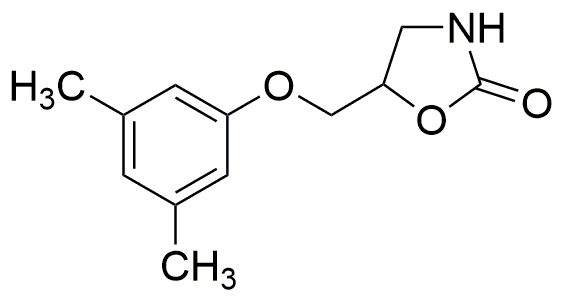Metaxalone is widely utilized in research focused on:
- Muscle Relaxation: Commonly prescribed for relieving muscle spasms and discomfort, making it beneficial in physical therapy settings.
- Chronic Pain Management: Employed in managing chronic pain conditions, offering an alternative for patients who may not respond well to traditional pain medications.
- Pharmaceutical Development: Used as a reference compound in drug formulation studies, helping researchers develop new muscle relaxants with improved efficacy and safety profiles.
- Clinical Trials: Frequently involved in clinical trials to assess its effectiveness and safety in various populations, providing valuable data for healthcare providers.
- Comparative Studies: Serves as a benchmark in studies comparing different muscle relaxants, aiding in the understanding of their pharmacological profiles and patient outcomes.
General Information
Properties
Safety and Regulations
Applications
Metaxalone is widely utilized in research focused on:
- Muscle Relaxation: Commonly prescribed for relieving muscle spasms and discomfort, making it beneficial in physical therapy settings.
- Chronic Pain Management: Employed in managing chronic pain conditions, offering an alternative for patients who may not respond well to traditional pain medications.
- Pharmaceutical Development: Used as a reference compound in drug formulation studies, helping researchers develop new muscle relaxants with improved efficacy and safety profiles.
- Clinical Trials: Frequently involved in clinical trials to assess its effectiveness and safety in various populations, providing valuable data for healthcare providers.
- Comparative Studies: Serves as a benchmark in studies comparing different muscle relaxants, aiding in the understanding of their pharmacological profiles and patient outcomes.
Documents
Safety Data Sheets (SDS)
The SDS provides comprehensive safety information on handling, storage, and disposal of the product.
Product Specification (PS)
The PS provides a comprehensive breakdown of the product’s properties, including chemical composition, physical state, purity, and storage requirements. It also details acceptable quality ranges and the product's intended applications.
Certificates of Analysis (COA)
Search for Certificates of Analysis (COA) by entering the products Lot Number. Lot and Batch Numbers can be found on a product’s label following the words ‘Lot’ or ‘Batch’.
Numéro de catalogue
Numéro de lot/série
Certificates Of Origin (COO)
This COO confirms the country where the product was manufactured, and also details the materials and components used in it and whether it is derived from natural, synthetic, or other specific sources. This certificate may be required for customs, trade, and regulatory compliance.
Numéro de catalogue
Numéro de lot/série
Safety Data Sheets (SDS)
The SDS provides comprehensive safety information on handling, storage, and disposal of the product.
DownloadProduct Specification (PS)
The PS provides a comprehensive breakdown of the product’s properties, including chemical composition, physical state, purity, and storage requirements. It also details acceptable quality ranges and the product's intended applications.
DownloadCertificates of Analysis (COA)
Search for Certificates of Analysis (COA) by entering the products Lot Number. Lot and Batch Numbers can be found on a product’s label following the words ‘Lot’ or ‘Batch’.
Numéro de catalogue
Numéro de lot/série
Certificates Of Origin (COO)
This COO confirms the country where the product was manufactured, and also details the materials and components used in it and whether it is derived from natural, synthetic, or other specific sources. This certificate may be required for customs, trade, and regulatory compliance.


